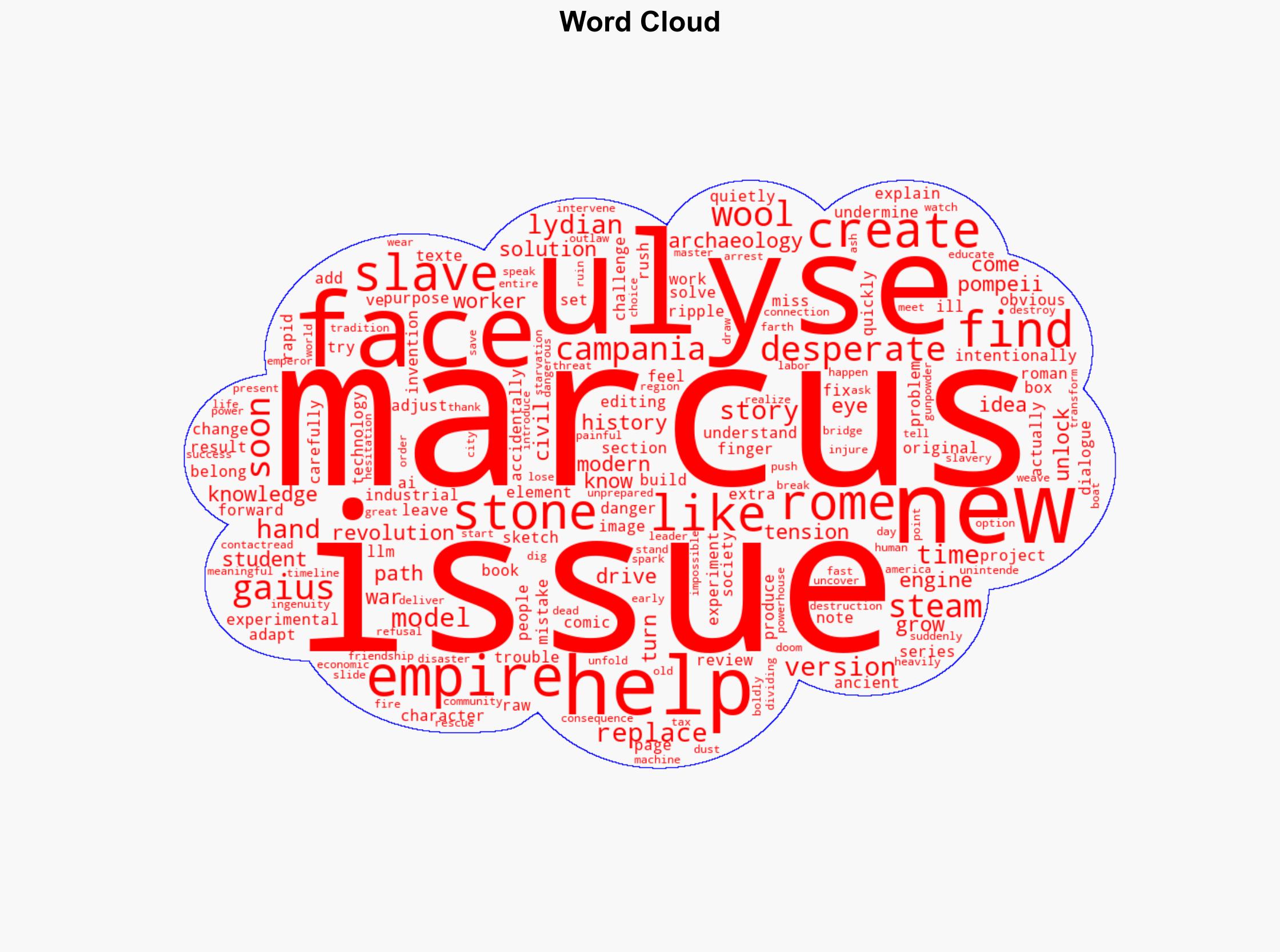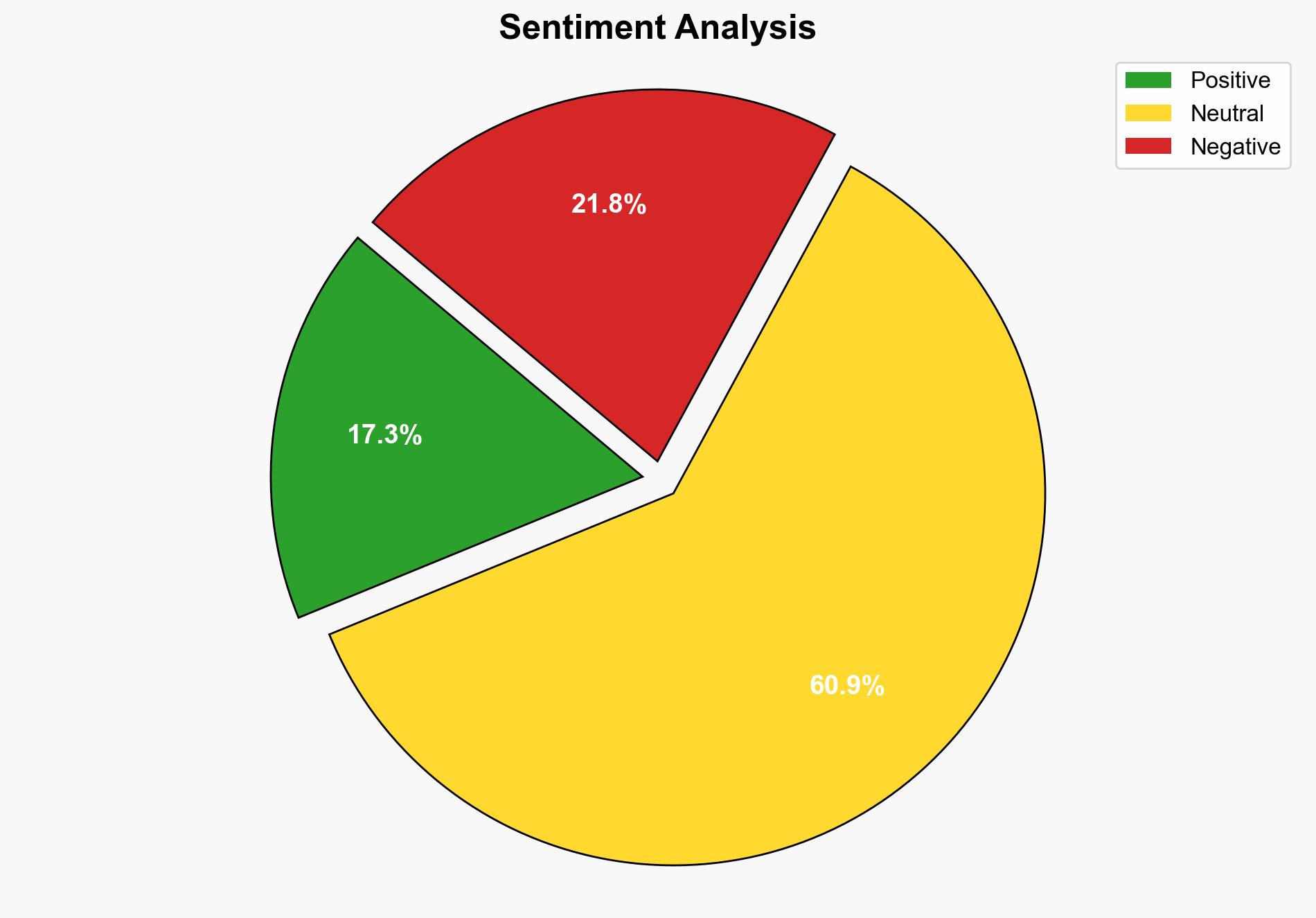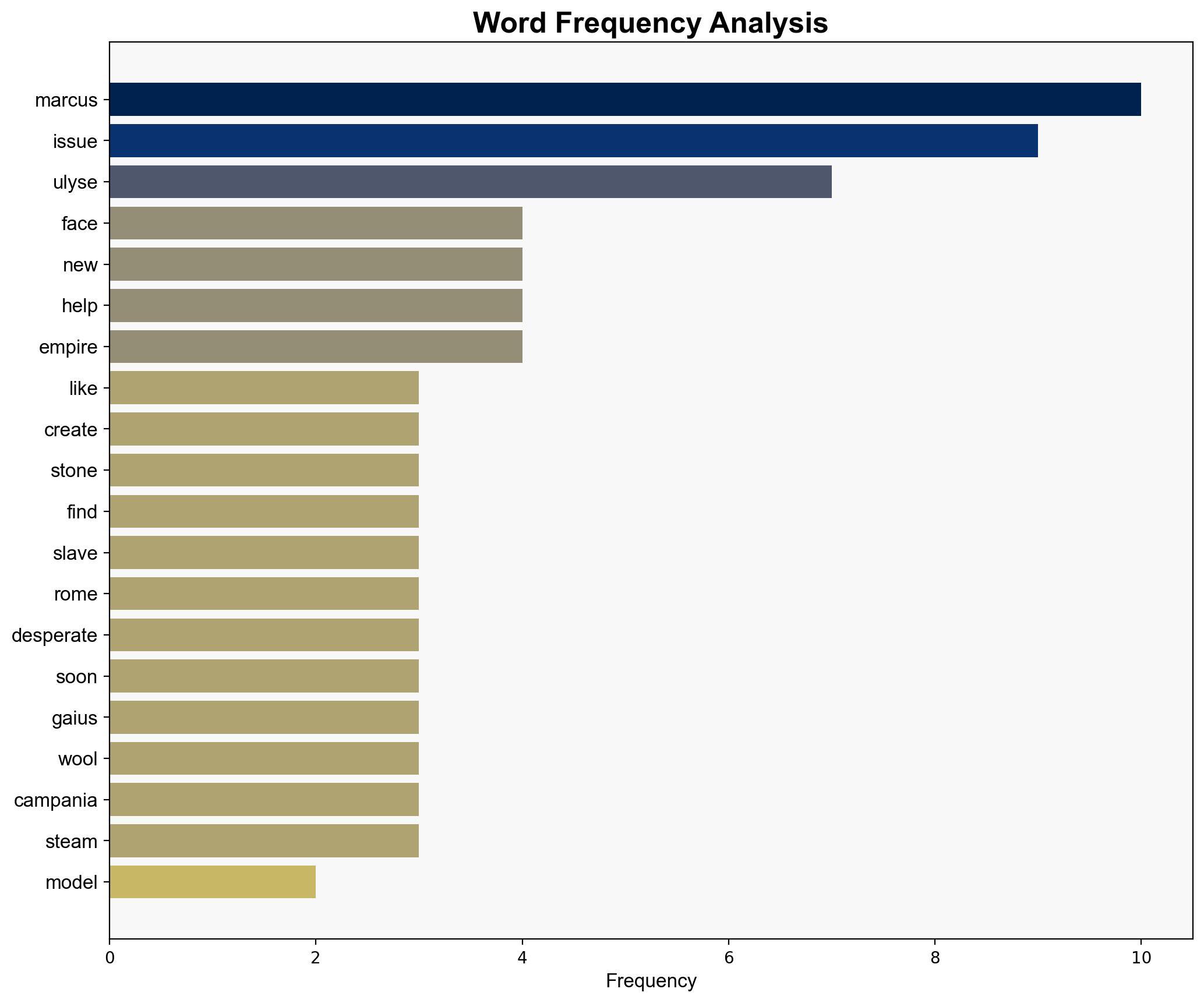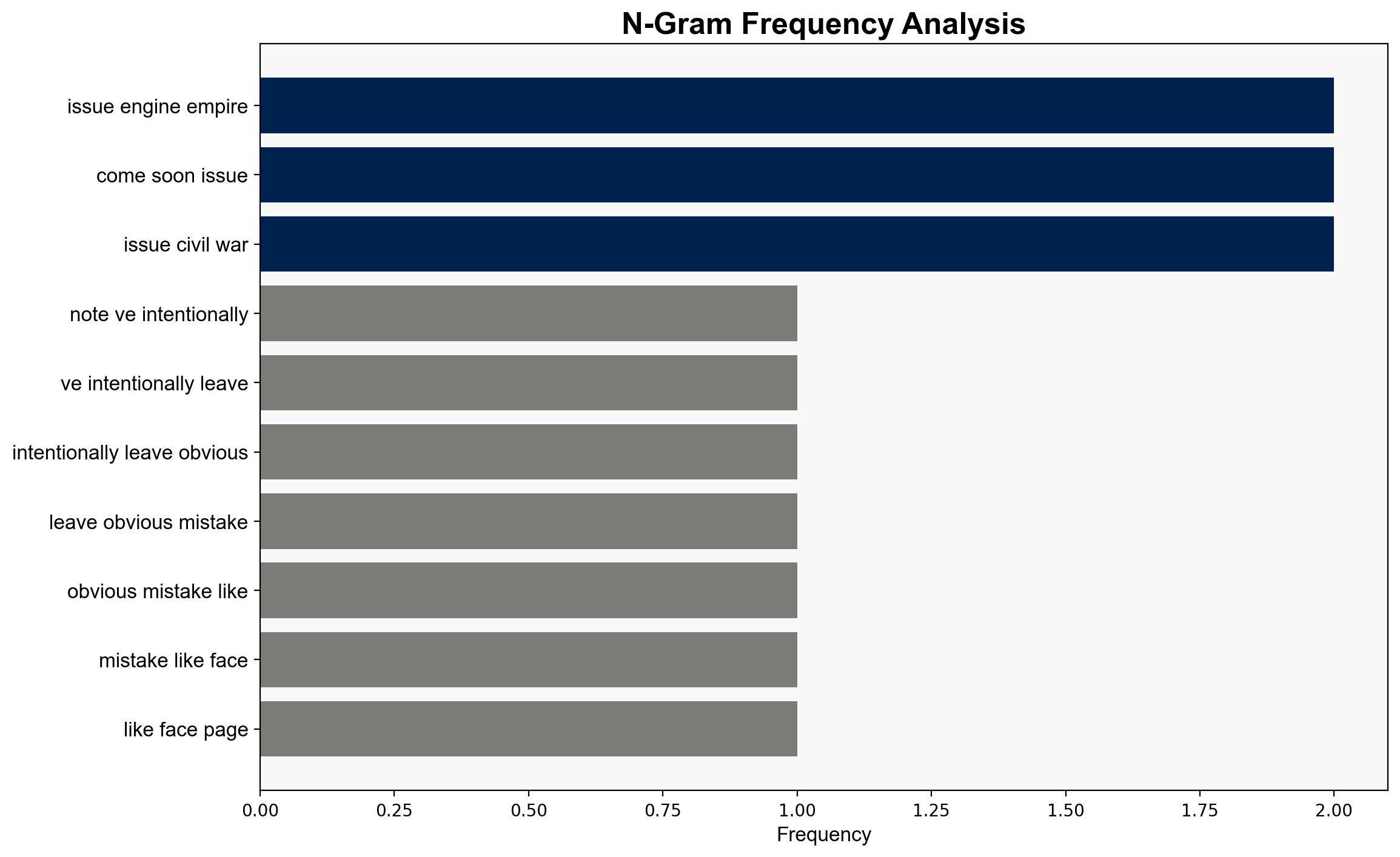Show HN The Roman Industrial Revolution that could have been – Thelydianstone.com
Published on: 2025-06-11
Intelligence Report: Show HN The Roman Industrial Revolution that could have been – Thelydianstone.com
1. BLUF (Bottom Line Up Front)
The narrative explored in “The Roman Industrial Revolution that could have been” presents a speculative alternate history where the Roman Empire experiences an industrial revolution driven by modern technological insights. This scenario highlights the potential for rapid societal transformation and the resulting socio-political tensions. Key findings suggest that the introduction of advanced technologies, such as steam power and gunpowder, could have accelerated economic development but also heightened risks of civil unrest and systemic instability. Recommendations focus on understanding the implications of technological disruptions in historical contexts to better anticipate future challenges.
2. Detailed Analysis
The following structured analytic techniques have been applied to ensure methodological consistency:
Cognitive Bias Stress Test
The narrative’s speculative nature requires careful examination of assumptions about technological adoption and societal readiness. Red teaming exercises reveal potential biases in assuming linear progress and uniform acceptance of change.
Bayesian Scenario Modeling
Probabilistic forecasting suggests that the likelihood of conflict escalation increases with the introduction of disruptive technologies. The model indicates a high probability of socio-economic tensions leading to civil strife.
Network Influence Mapping
Analysis of influence dynamics between key figures, such as Marcus and Gaius, and Roman leadership illustrates the potential for power shifts. The mapping highlights how technological advancements could alter traditional power structures.
3. Implications and Strategic Risks
The introduction of steam power and gunpowder in ancient Rome could have led to significant economic growth but also posed strategic risks, including increased taxation pressures and the potential for revolution. The narrative underscores the importance of managing technological change to prevent destabilizing effects.
4. Recommendations and Outlook
- Encourage historical analysis of technological disruptions to inform current policy-making and risk management strategies.
- Develop scenario-based planning frameworks to anticipate and mitigate the impacts of rapid technological advancements.
- Best Case: Controlled integration of technology leads to sustained economic growth and societal advancement.
- Worst Case: Unmanaged technological change results in widespread unrest and systemic collapse.
- Most Likely: Gradual adaptation with intermittent conflicts and adjustments in power dynamics.
5. Key Individuals and Entities
– Marcus: A Roman slave who becomes pivotal in introducing modern technologies.
– Ulyse: An archaeology student who inadvertently influences historical events.
– Gaius: A master in the Roman Empire who collaborates with Marcus.
6. Thematic Tags
technological disruption, historical analysis, socio-political dynamics, economic transformation





